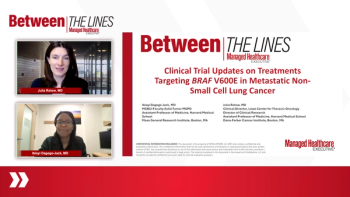
Impact of Dry Eye Disease on Quality of Life
Quality-of-life concerns, including biopsychosocial impacts caused by dry eye disease, are explored by Dr Periman.
Episodes in this series

Laura M Periman, MD: Thank you for that question about the quality-of-life impacts of ocular surface disease. There has been quite a bit of scientific published work around this very question. It can be defined in several ways. We now know that workplace productivity is negatively impacted by dry eye disease. This has significant implications for large employers, especially those with computer-heavy work demand among their employees. It can statistically significantly decrease silent reading speed. This has been well described and well studied. Those are just functional quality of life impacts.
Then you have standardized questionnaires, such as the SPEED [Standard Patient Evaluation of Eye Dryness Questionnaire] and OSDI [Ocular Surface Disease Index] scores. One of my favorites is the IDEEL [Impact of Dry Eye in Everyday Life] score. That’s a great standardized questionnaire for assessing the patient’s individual impact of their disease and the impact of the interventions of some of these advanced treatments. There are multiple ways to capture the day-to-day grind and impact on these patients with dry eye disease, but there’s also a way these same questionnaires can be used to track progress with therapy.
There’s the biopsychosocial impact of dry eye disease, not only the biology and the damage that’s happening on the ocular surface, but the patient’s workplace performance and presence in the family. Some of these patients get what we call ocular fatigue, which is like, “I just want to close my eyes.” They aren’t ready for bed, but their eyes are so tired from being exposed all day long, they just have to close them. Ocular fatigue is a late symptom. It’s best to not let people get to that point. But that impacts family systems and the ability to enjoy evening activities, dinner with the family, watching great shows like Yellowstone, whatever it is. This negatively impacts quality of life from that perspective.
Then there’s the psychological piece. So many of our patients with dry eye suffer from significant anxiety and depression. This is a chicken and egg or horse and cart problem with dry eye disease. Chronic pain is associated with anxiety and depression. Dry eye is no different; it’s also associated with anxiety and depression. When it’s treated with medications that are less drying to the ocular surface, that can be very helpful in getting a person out of that downward spiral from a biopsychosocial perspective and starting to get them turned back around.
There has been some work done around the quality-of-life impacts of dry eye disease compared with heart disease. There was a study in 2005, Rhett Schiffman, [MD, MS, MHSA,] is the first author. They were able to measure quality-of-life impacts on patients with moderate-to-severe angina, ischemic heart disease, and it has the same impact as moderate-to-severe dry eye disease. That’s something that people can get their heads around. That’s a lot of suffering. If your dry eye is so bad that the quality-of-life impact on patients is the same as moderate-to-severe heart disease, I can get my head around that. That gives you a better picture of the significant load on a person’s individual life and the impacts on society and economical functioning.
Transcript edited for clarity.
Newsletter
Get the latest industry news, event updates, and more from Managed healthcare Executive.



















































